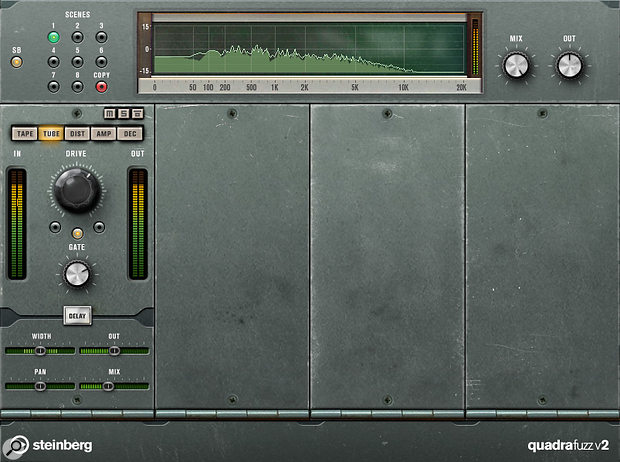Article Preview :: Cubase Tips & Techniques
Technique : Cubase Notes
Quadrafuzz v2 offers a basic single-band mode, and it’s well worth exploring. Quadrafuzz v2 offers a basic single-band mode, and it’s well worth exploring.
Cubase’s unique Quadrafuzz v2 plug-in is useful for so much more than guitar processing...
John Walden
Many users were sad when Cubase lost its Quadrafuzz plug-in a few versions ago, but in Cubase 8 this popular little plug-in was re-incarnated — and Quadrafuzz v2 looks like it’s been working out, because it boasts both a bigger GUI and some impressive new features! It offers both single and multi-band operation, five different distortion types (Tape, Tube, Dist, Amp and Dec), gate (more on this in a minute), delay and stereo-width sections per band, and a ‘scene’ system for instant switching between complete configurations of the plug-in. So, if you only think guitar or bass when someone says ‘fuzz’, it might be time you broadened your sonic horizons — let me take you through a few examples.
Stomp On It
Of course, guitar and fuzz do go together like Keef and Satisfaction, so it would be remiss of me not to at least mention guitar applications. Some fairly conventional ‘warm up and crunch’ guitar sounds seem a good place to start exploring this plug-in, so that’s what we’ll do, but bear in mind that Quadrafuzz v2 can run the full gamut, from gentle warming through to bee-in-a-bottle fizz.
After inserting an instance of Quadrafuzz v2 on your guitar track, click the SB button to switch from the default setting to the simpler, single-band format. This single band’s control set is the same as that in each band in multi-band mode, which makes this a good place to accustom yourself to the Tape, Tube and Amp modes, which are the most guitar-friendly choices.
Published in SOS February 2016
No comments:
Post a Comment